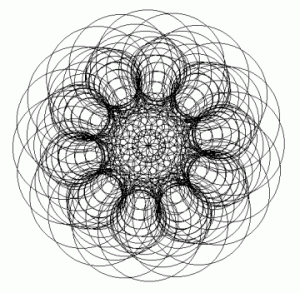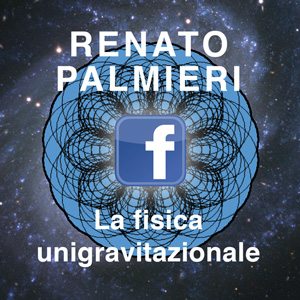Chapter 2.2 Electromagnetism: what modern physics sees, but it is not there…
Let us now consider a subject that requires a critical attention in the interpretation of very common phenomena, read with a real optical distortion by current physics.
Our task becomes more difficult, because it is to dismantle a false evidence: that of the phenomena of “repulsion”, which occur in the domain of electromagnetic and nuclear forces, and lack in the domain of gravitation.
Equal electric charges repel each other; opposite electric charges attract each other. The protons attract each other in the nucleus; they repel each other over the “electrostatic barrier”. Homologous poles of two magnets repel; opposite poles attract. Rebound (by impact) and recoil (by pushing) phenomena are also repulsive.
We will say an incredible thing, at first sight, but we would ask readers to check the shock and to follow calmly the reasoning and above all the evidences of the following statement we will give:
The repulsive phenomenology is just only phenomenology, namely it is the appearance of something else: in nature “repulsion” does not exist.
And here is the gravitational reading of these phenomena:
The events that are usually interpreted as “repulsive” are, in fact, of gravitational escape: at sufficiently large mutual distances and speeds, the bodies escape the mutual attraction to fall into the attraction of external bodies and fields. In other words, what appears rejected by something, is attracted by a prevailing force of fields external to the reference system.
We pass immediately to give an account of this with some arguments in this chapter and with detailed evidences in later chapters.
FIRST ARGUMENT:
We suppose that a comet, at hyperbolic trajectory – that is, non-periodic – revolves very closely around the Sun, whose gravitational acceleration makes it (the comet) return to outer space in a angularly symmetrical direction respect to the axis and the asymptotes of the hyperbola. An observer of galactic sizes would think that the comet – smaller particle for him – went to hit something and it has been rejected: we would have a precise geometric representation of incident ray and reflected ray (the asymptotes respect to the axis), if the Sun became an atom of a mirror and the comet photon. In reality, we know that this was a gravitational event of just attractive type: the direction and velocity of the comet were such that, on the solar gravitational field, attractively winning in the first instance, then, fields and external forces, always attractive, prevailed, causing the escape of the comet respect to the Sun.
SECOND ARGUMENT:
An observer much larger than the former, of megagalactic spatial and temporal dimensions, looks with his instruments a globular cluster of billions of stars – corpuscles for him – and sees a stirring of particles having similar masses (the stars) that avoid each other, diverting quickly and continuously by their respective paths: he will think then that the particles repel each other (as for physicists protons or electrons). But we know that in that mass a gravitational dynamic equilibrium exists precisely because of the average equivalence of stellar masses which, attracting other masses in a statistically balanced way, create countless situations of mutual escape, because of the large distances, of mutual speeds and varied directions of motion.
If we continue to grow the sizes of the observer, we will find that his vision is complicated and is enveloped in growing errors. When star clusters brought to its attention multiply and become smaller, the perspective of the reading is actually inverted: those stars-corpuscles which, in lower dimensions of the observation system, seemed to repel each other, now they appear to attract within each cluster and repel between a mass and the other. Then he will invent a strong nuclear attractive force, (protons in the nucleus, stars in the mass) and an electromagnetic repulsive force, (protons outside the nucleus, stars from a cluster to another), with an “electrostatic barrier” in the middle.
Needless to say that planetary systems will be for him attractively composed by ‘positive’ stars and “negative” planets. In fact, the orbiting of masses smaller than a larger mass is the result, on smaller masses, of a dynamic attractive balance between the central mass and all gravitational systems of the remaining universe.
Finally, if the sizes of the observer were to grow too much, he will found the quantum mechanics and the “uncertainty principle” on a cosmic scale.
THIRD ARGUMENT:
This third argument may seem metaphorical, but it is not. It shows that the idea of a “repulsive” force mistakenly slips in everyday life, while nature knows just the law of attraction. We present it in the male form, so to speak: a man between two girls, one is beautiful and another is ugly, but it is sexually reversible: a woman between two boys, one is beautiful and another is ugly.
So, I am in the room of a cruise ship, with the two girls only. I feel attraction for the beautiful one, which I approach, I left the other, for which I feel “repulsion.” At one point, the beautiful leaves, but I still feel repulsion for the ugly. Unfortunately the ship sank in a storm and I am thrown on a desert island alone with the ugly girl. As the days and the hopes of a rescue pass, the repellent appearance of the ugly girl fades in me until it disappears, and for her I get to try just sexual attraction, which pushes me to look for her contact.
The correct analysis of the episode is that I’ve always been attracted to both girls: the attraction for the beautiful has prevailed until there was a real reason or an ideal possibility that made me compare with the other. This definitely vanished, the primary attraction re-emerged, which there has always been for the other too.
The common but incorrect analysis introduces a false factor: the “repulsion”, which forces me to label arbitrarily the following situations. For it, the ugly girl and me are negative electrons, the beautiful one is a positive proton, around which I run to orbit. In the desert island, the ugly girl has to become a positron (positive electron) and so she and me can exceptionally mate, forming the “positronium.”
It goes without saying that the introduction of an inexistent explanation is the start of an unstoppable chain of errors leading hopelessly astray. In subsequent chapters, we provide the evidences of these three arguments, by which it is removed another alleged difference between the gravitation and other forces: the attractive-repulsive dualism of the atomic-nuclear forces.



